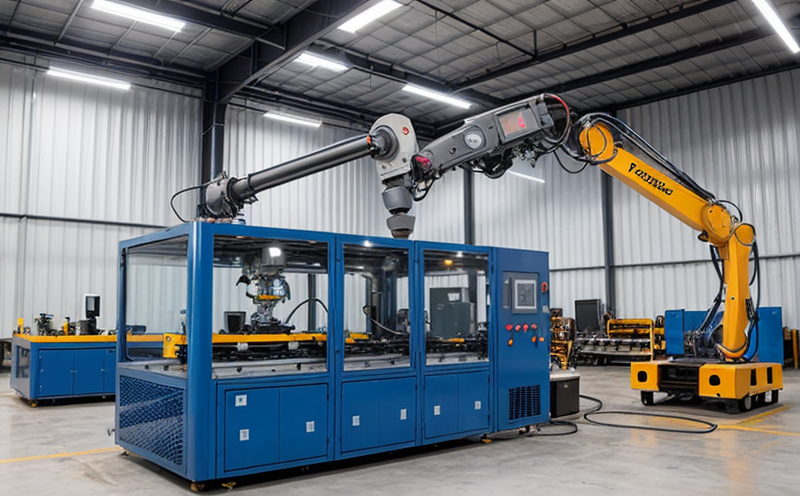ISO 13482 Safety Performance Testing of Service Robots
The International Organization for Standardization (ISO) has developed standards to ensure safety in industrial and service robotics. ISO 13482 specifically addresses the safety performance testing of service robots, ensuring that these machines operate safely within their intended environments without posing a risk to human operators or bystanders.
Service robots are designed to assist humans in various tasks, from healthcare and logistics to manufacturing processes. These robots interact closely with people, making it critical that they meet stringent safety requirements. ISO 13482 provides the necessary framework for testing service robots to ensure compliance with these standards.
The standard covers a wide range of aspects related to the design, construction, and operation of service robots. It addresses potential hazards such as mechanical components, electrical systems, human-robot interfaces, and environmental factors. Compliance ensures that robotic systems are not only functional but also safe for use in diverse settings like hospitals, warehouses, and office spaces.
Testing according to ISO 13482 involves several key steps. Initially, the robot’s design must be thoroughly assessed to identify potential risks. This includes evaluating physical dimensions, power consumption, and interaction points with users. Following this evaluation, rigorous tests are conducted using specialized equipment that simulates real-world scenarios. These tests assess various parameters including but not limited to:
- Collision detection and avoidance
- Emergency stop mechanisms
- User interface safety
- Ergonomics for human-robot interaction
- Mechanical stability during operation
- Electrical safety measures
- Environmental adaptability
- Fail-safe modes and recovery procedures
The testing process is comprehensive, requiring not only technical expertise but also a deep understanding of the robot's intended use. Compliance with ISO 13482 ensures that service robots are robust enough to handle unexpected situations while maintaining high levels of safety for all involved parties.
Compliance with this standard is essential for manufacturers and integrators who want their products to meet global regulatory requirements. By adhering to these standards, companies can enhance the reliability and trustworthiness of their robotic solutions, thereby increasing market competitiveness in an increasingly automated world.
Benefits
The benefits of ISO 13482 Safety Performance Testing extend beyond mere compliance; they encompass enhanced safety, improved quality assurance, regulatory adherence, and increased trust among end-users. Here’s a detailed look at these advantages:
- Enhanced Safety: By rigorously testing service robots for all potential hazards, ISO 13482 ensures that these machines are safe to operate in close proximity to humans.
- Better Quality Assurance: Comprehensive testing helps identify design flaws early on, leading to higher-quality products and fewer recalls.
- Regulatory Adherence: Compliance with ISO standards like 13482 is a requirement for many industries, ensuring that manufacturers stay ahead of regulatory changes.
- Increased Trust: When robots are proven safe through rigorous testing, end-users gain confidence in the technology, which fosters wider adoption and acceptance.
In addition to these tangible benefits, ISO 13482 also promotes innovation by encouraging continuous improvement in safety measures. As standards evolve, so do technologies, leading to safer, more efficient service robots.
For organizations focused on quality management and compliance, ISO 13482 Safety Performance Testing offers a roadmap for achieving excellence in robotics development and deployment. This standard serves as a benchmark that guides companies towards creating safer, more reliable robotic systems.
Environmental and Sustainability Contributions
The practice of ISO 13482 Safety Performance Testing aligns closely with broader environmental sustainability goals by promoting the development of eco-friendly service robots. These robots can play a crucial role in reducing energy consumption, minimizing waste generation, and enhancing resource efficiency across various sectors.
For instance, in manufacturing processes, service robots can optimize material usage through precise handling techniques, thereby reducing raw material waste. In logistics, autonomous robots can streamline warehouse operations, leading to lower carbon footprints associated with transportation and storage.
The safety testing ensures that these robotic systems operate efficiently without compromising environmental integrity. For example, robust collision detection mechanisms help prevent accidents that could lead to product damage or spills, thus preserving natural resources. Moreover, the standard’s emphasis on fail-safe modes encourages the development of robots that can safely shut down in emergencies, preventing further harm.
By adhering to ISO 13482 Safety Performance Testing, manufacturers contribute significantly to sustainability efforts by integrating safety into their product lifecycle management strategies. This approach not only protects human operators but also promotes responsible use of resources, contributing positively to the environment.
Use Cases and Application Examples
- Hospital Settings: Service robots are increasingly used in hospitals for tasks such as delivering medication or monitoring patient vitals. Testing ensures that these robots can safely navigate hospital environments without posing risks to patients, staff, or visitors.
- Logistics Warehouses: Autonomous robots help manage inventory by moving goods between storage areas and loading docks. Safety testing guarantees that these machines operate flawlessly within crowded warehouse spaces.
- Manufacturing Plants: Robotic assistants can perform repetitive tasks in production lines, increasing efficiency while reducing human error. Compliance with ISO 13482 ensures their safe integration into manufacturing processes.
- Home Care Robots: For elderly care or home assistance, these robots need to interact safely with residents. Testing guarantees that they are gentle and responsive, enhancing quality of life for users.
These use cases illustrate how ISO 13482 Safety Performance Testing is essential in ensuring the safe deployment of service robots across diverse applications. By meeting this standard, manufacturers can confidently introduce these innovative solutions into challenging environments where human safety remains a top priority.





